
It was one of those dope slap moments. “Why did we wait so long to come here?” We were sitting in Quinoa, the Peruvian and Mexican restaurant on the north end of Doylestown, which opened in December 2013. You’re probably thinking, “You are just getting there?” I have no good excuse. But that’s all in the past now.
 When I think about Quinoa, named after the highly nutritious grain indigenous to Peru, I think—no, I feel—warmth. Certainly from the food which bursts with golds and yellows, greens, and reds, borrowing its color and spiciness from a variety of Peruvian peppers, unique vegetables and fruits.
When I think about Quinoa, named after the highly nutritious grain indigenous to Peru, I think—no, I feel—warmth. Certainly from the food which bursts with golds and yellows, greens, and reds, borrowing its color and spiciness from a variety of Peruvian peppers, unique vegetables and fruits.
Warmth too from the decor in the modest restaurant. Golds, ochres, deep, earthy reds and wood create a warm dining atmosphere. The paintings of street scenes in Peru and the Peruvian artifacts scattered around the dining room remind me that I am not in the average Mexican restaurant, but someplace a little different.
And maybe most importantly, I feel the warmth of the people, from the server to each of the family members working at the restaurant, always ready with a smile and a greeting. Jack Egoavil, the son of Carmen and Fausto Egoavil, who own Quinoa and its sister restaurant in Lambertville, El Tule, is a good example. Full of energy and passion, and always with a quick smile, Jack can warm the room all by himself.
 I’m very familiar with Mexican food, but as we skim the menu—which is about 60% Peruvian dishes and 40% Mexican—I’m feeling a bit lost. No matter. Jack recommends we start with the appetizer sampler. Four completely new dishes to my palate but all interesting and tasty. “These are all things you would find being sold by street vendors in Peru,” explains Jack, “It’s all very traditional.”
I’m very familiar with Mexican food, but as we skim the menu—which is about 60% Peruvian dishes and 40% Mexican—I’m feeling a bit lost. No matter. Jack recommends we start with the appetizer sampler. Four completely new dishes to my palate but all interesting and tasty. “These are all things you would find being sold by street vendors in Peru,” explains Jack, “It’s all very traditional.”
The sampler contrasts flavors, colors, textures, and even shapes, but they all “complement each other,” says Jack. The Papas Rellenas is a ball of mashed potatoes, stuffed with meat and olives, quickly deep-fried, and served with red onions, avocado salad, and a bright orange salsa criolla.  The Causa Limena is a round potato cake, stacked with chicken salad, vegetables, yellow peppers, and “magical” lemon. Yuquitas Fritas, long, thick fries made from the yucca plant, are served with an Andean Huncaina Cream sauce, made from milk, cheese, and yellow peppers. The Palta a La Reina features a healthy serving of chicken salad filled with peas and other vegetables sitting on half of an avocado, with a radicchio leaf forming a kind of canopy over the dish. (Note: these dishes are all available in vegetarian versions.)
The Causa Limena is a round potato cake, stacked with chicken salad, vegetables, yellow peppers, and “magical” lemon. Yuquitas Fritas, long, thick fries made from the yucca plant, are served with an Andean Huncaina Cream sauce, made from milk, cheese, and yellow peppers. The Palta a La Reina features a healthy serving of chicken salad filled with peas and other vegetables sitting on half of an avocado, with a radicchio leaf forming a kind of canopy over the dish. (Note: these dishes are all available in vegetarian versions.)
The overwhelming impression is of freshness. When I cut my fork into the avocado it moved softly—but not too softly—into the green flesh and in my mouth it simply melted. Here was a perfectly ripe avocado. Not unripe, not too ripe. Just in that small window in-between that so many restaurants seem to miss—or don’t care about.

For entrées, Jack recommends his two favorite dishes. I love ceviche, Peru’s national dish. It is made from fish, typically Corvina (a type of grouper), which is marinated in lime juice and yellow pepper paste. The fish is “cooked” by the acidity of the marinade. The resulting liquid, a marriage of the fish’s natural juices, the lime and the peppers, is called Leche de Tigre, or Tiger’s Milk, in Peruviancuisine. It is spicy and a bright, yellow color. In my entrée, Tacu Tacu en Cebichado, the ceviche was laid on top of a patty (tacu tacu) made from rice and Peruvian yellow canary beans. The serving was so generous that I took half home for lunch the next day.
I was curious as to where the Egoavils were getting their Corvina, not a common fish in these parts. “We make a trip to a fish market in Newark every other day,” explains Jack. What do you import from Peru, I ask, as opposed to getting here? All of their peppers, Peruvian corn and dried potatoes, and the yellow canary beans you’ll find in the tacu tacu, all come from Peru.
My dining partner (husband, Mark) has an aversion to most things fish. However, there was plenty to choose from to sate his love of meat. Jack recommended another of his favorites, the Skirt Steak Tacu Tacu en Rajas Poblanas. Tender—due to being marinated in Aji Panca sauce—nicely seasoned to bring out the flavor of the meat, and perfectly cooked (Mark ordered it rare, and it came rare). It was also topped with poblano peppers and served with a pico de gallo, and the tacu tacu patty, which actually tasted different when paired with the meat instead of the ceviche.
By the end of the meal, I was intrigued. Peruvian food was not just another take on Mexican food. It was different and I wanted to learn why.
 First it is helpful to understand Peru’s geography and cultural history. There are three main regions in Peru: the coastal area (costa), the Andes Mountains (sierra), and the jungle forest (selva). Each has been influenced by their wide variety of indigenous vegetables and fruits—like potatoes, tubers, corn, peppers, tomatoes and beans—and the culinary traditions of its varied immigrants. Japanese, Chinese, Spanish, African, Italian, French, and British have all left their stamp on Peruvian cuisine, making it one of the most diverse in the world.
First it is helpful to understand Peru’s geography and cultural history. There are three main regions in Peru: the coastal area (costa), the Andes Mountains (sierra), and the jungle forest (selva). Each has been influenced by their wide variety of indigenous vegetables and fruits—like potatoes, tubers, corn, peppers, tomatoes and beans—and the culinary traditions of its varied immigrants. Japanese, Chinese, Spanish, African, Italian, French, and British have all left their stamp on Peruvian cuisine, making it one of the most diverse in the world.
“It’s the different clashes of culture that make Peruvian cuisine so special,” says Jack. So don’t be surprised when you see a dish called Ceviche Chifa made with typical Chinese ingredients like wontons and black sesame seeds. Chinese immigrants came to Peru hundreds of years ago and their culinary influence can be seen throughout Peruvian neighborhoods, all of which have a Chifa restaurant.
Quinoa’s menu includes dishes from all those regions, whether it’s ceviche from the coast, or Papas Rellenas, from the Andes. “It is like home cooking,” explains Jack. He uses the term “criollo” to describe the style of food. “It’s traditional food, down-to-earth, the kind of food you will find being sold by street vendors all over Peru, or in someone’s home.” It also has to be fresh, Jack emphasizes, and is very versatile, enabling Quinoa to offer many dishes in a vegetarian/vegan or gluten-free version.
 At the heart of this menu—and El Tule’s as well—is family. Carmen Egoavil, mother of the clan, may be diminutive in size, with a quick smile and warm, dark eyes, but you can see with one look that she can hold her own and then some. Although a self-taught cook, she recently spent six months in Peru taking formal cooking classes. She innovates and expands the menu constantly, but keeps it all authentic, says Jack.
At the heart of this menu—and El Tule’s as well—is family. Carmen Egoavil, mother of the clan, may be diminutive in size, with a quick smile and warm, dark eyes, but you can see with one look that she can hold her own and then some. Although a self-taught cook, she recently spent six months in Peru taking formal cooking classes. She innovates and expands the menu constantly, but keeps it all authentic, says Jack.
Son-in-law, Said Anguiano, is the restaurants’ Mexican chef. Sylvia, the youngest of the four siblings, is just returning from five months of Cordon Bleu cooking classes in Peru, and Jack is leaving soon to do the same. The other two sisters, Michelle and Adele, help run both restaurants. “Everyone has an important role to play,” says Jack.
I sat with Jack in the restaurant one afternoon, in that quiet time between lunch and dinner. He asked one of his sisters something in Spanish. A few minutes later, she brought us both mugs of Champu, a warm Andean drink made with pineapple, quinoa and brown sugar. As I’ve said, Peruvian food is different. But damn good. On a cold January day it certainly hit the spot.
If you are familiar with Hispanic culture, you know just how important family is. Not just immediate family, but the extended one as well. “It’s really cool to be able to work with your family,” Jack shares, motioning towards his young niece moving around in her baby walker, her mother encouraging her from across the room. “We may argue or yell at each other, but at the end of the day, we love each other.”
I mention to Jack that if the Egoavils want to continue to grow, and maintain their high standards, they are going to need more people. Jack smiles and agrees. That’s why they are going back and forth to learn culinary skills in Peru, and why they welcome their cousins in Peru to come, learn and grow. “Whatever we do in the business is for them,” he says, referring to this younger generation. “When we came here we had very little,” he adds, and they want it to be different for the next generation. “We are growing not just as a business, but as a family too.”
Quinoa, Peruvian & Mexican Restaurant
62 North Easton Road
Doylestown, PA 18902
PH: 215.348.2826
WEB: www.QuinoaRestaurantBYO.com
Facebook: Quinoa Peruvian/Mexican
Quinoa is BYOB
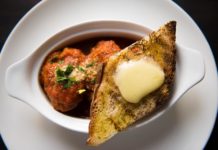
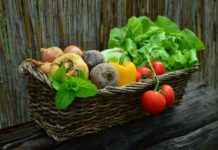

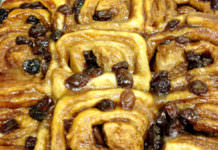

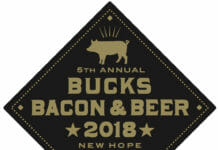
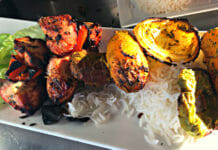

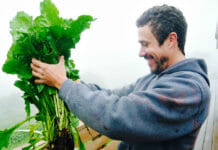
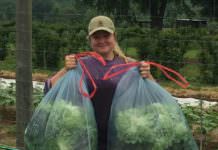
![What we’re reading [Oct 16 2017]](https://www.buckscountytaste.com/wp-content/uploads/2017/10/coffee_macbook_reading_pexels-photo-414630-218x150.jpeg)
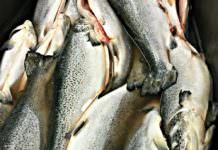


[…] for $21. It’s a great way to try their authentic and delicious Peruvian and Mexican food. See our previous post, Quinoa, to learn more about this family-owned restaurant. Keep an eye on their Facebook page for details. […]
[…] Quinoa Peruvian and Mexican Restaurant Family run Peruvian and Mexican restaurant with appetizer samplers and new and tasty dishes. Learn the behind the scenes of the restaurant here. 3710 N. Easton Road Doylestown, PA PH: 215.348.2826 Web: http://quinoarestaurantbyo.com/ […]